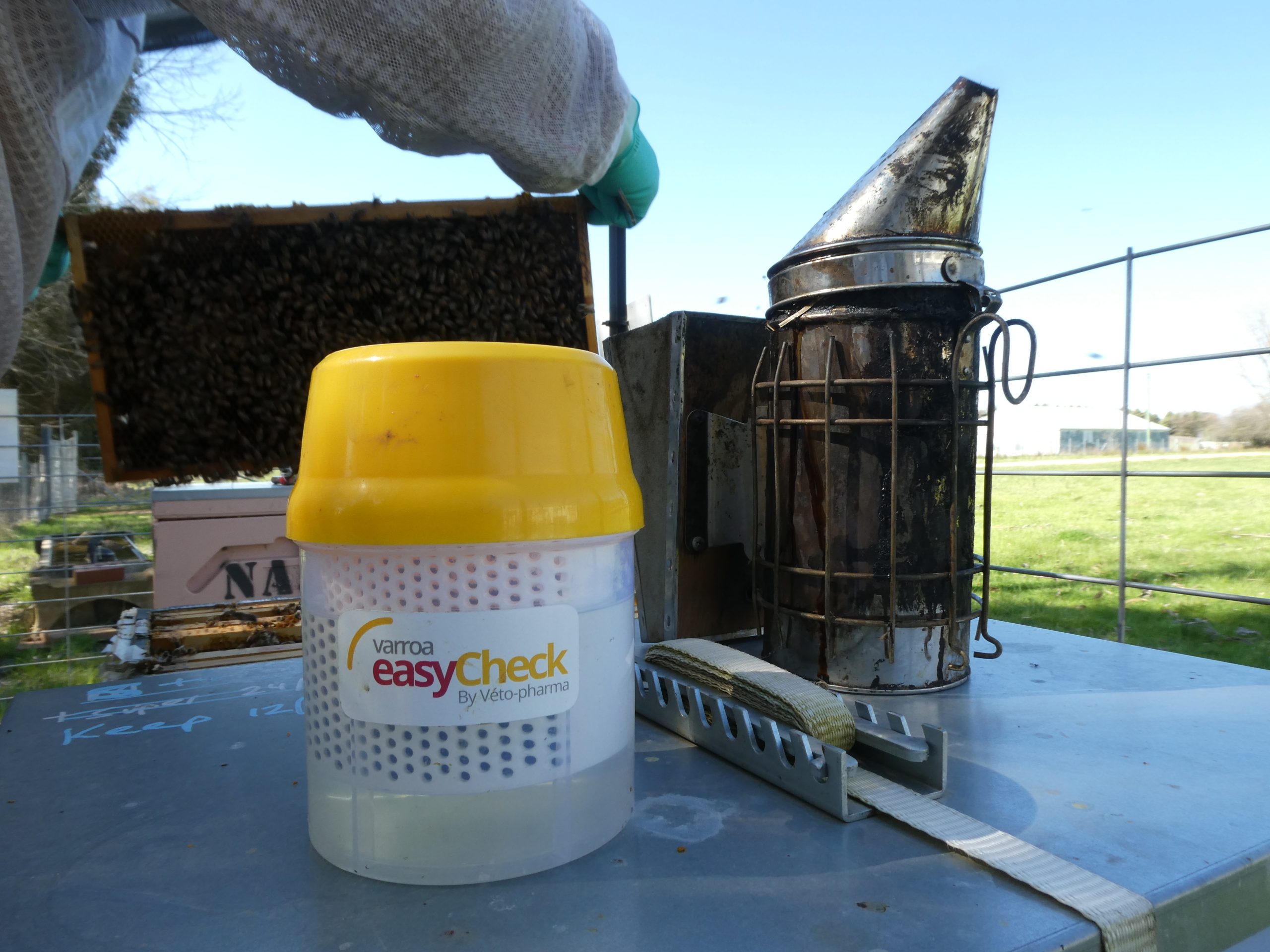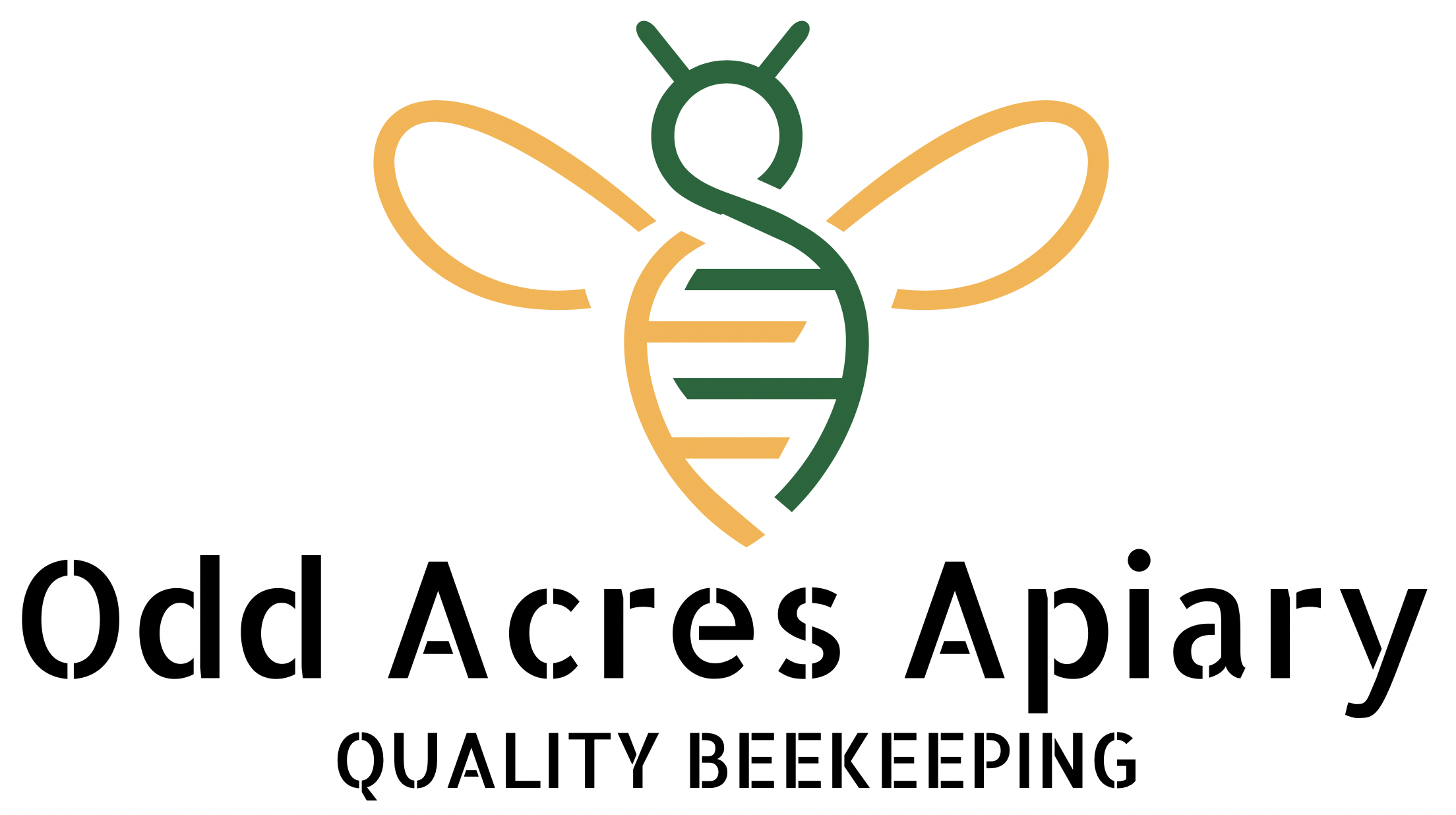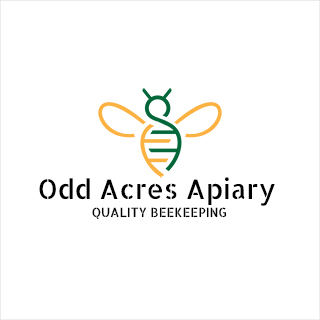
Varroa Checks in our Apiaries
So, as we potter through our apiaries doing our hive inspections and varroa checks, in comes the news……….eradication is over. Beekeepers need to prepare to live with the mite !!!
I thought – finally, some common sense. Then, in the same breath came the realisation that from now on, the alcohol washes are no longer the nuisance ritual the NSW Department of Primary Industry (DPI) required of beekeepers for over the last 18 months (more on this in a moment), but a vital tool in keeping our colonies alive. If you haven’t started the habit of doing alcohol washes regularly during the bee silly season (about every 4-6 weeks), then now is the time to begin. Let me explain.
I referred to the mandatory alcohol wash requirement from the NSW DPI as a nuisance ritual because alcohol washing would not detect varroa until varroa was well established in the colonies, including the general area around your hives. If you discovered one mite – chances were very high that there were more mites in other colonies nearby. Then, of course, you wonder where the mites came from, so the trail begins…
The mandatory alcohol wash process would not work as the sole detection of varroa. In hindsight, this is easy to say, yet the “experts” insisted that this was the most suitable approach beekeepers could take given the circumstances. NSW DPI emphasised that our best tool for actual early detection of mites – sticky mats and miticides – was for the special preserve of biosecurity and authorised officers only with the requisite knowledge and training to use and manage such tools.
The special preserve of biosecurity and authorised officers having access to the availability of miticide supplies and the evaluation of sticky mats, which, again, required special training, meant most beekeepers were wasting time with a sub-par tool (alcohol washing) when the best tool available for very early detection of mites – miticide supplies and sticky mats – was not deployed in the numbers it needed to be from the onset of varroa detection in NSW.
The suggestion from the NSW DPI that particular training, the lack of sticky mat availability, and the need to have specialised visualisation skills to run such a mite detection process appeared far-fetched. Fellow beekeepers who managed the local Sentinel Hive near Canberra Airport, ACT, were provided an authorisation letter and some funds and told where to buy the miticides. They inspected the Sentinel Hives every six weeks, replaced miticides and sticky mats and waited for the next iteration. No training was provided, and no special skills were required to undertake the role of miticide and sticky mat placement.
To add more intrigue, several weeks ago, I heard many beekeepers in NSW were ignoring the DPI biosecurity orders and were not doing alcohol washes for varroa monitoring and tracking and record-keeping submissions back to the DPI. Some beekeepers were not even bothering to register hive movements. I don’t have an accurate figure of this percentage – sources suggest as high as 40% of registered beekeepers in NSW – this is a crazy figure, yet who knows? What surprised me was that the DPI authorities appeared not to be monitoring the registered beekeepers, issuing fines or official warnings in most cases.
I can hold ire towards the machinery of varroa detection as much as I like, yet the reality is, I have no alternative. The simple fact is:
If I don’t embrace regular (every 4-6 weeks) mite alcohol washes to understand the general level of mite infestation in my colonies, and I don’t do alcohol washes before and after treatments, those colonies are finished!!
As we advance, we will increase the number of alcohol washes across our apiaries and lobby the biosecurity powers that are as hard as we can to support the widespread use of sticky mats and miticides for as many beekeepers who want them.
We see this approach will enable beekeepers to establish their own “sentinel” hives within their operation and give themselves the earliest possible warning of the arrival of mites in their area.

